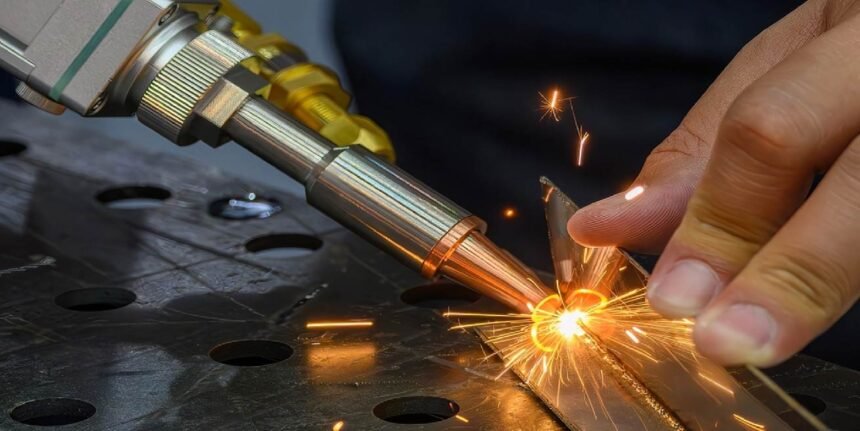Stud welding is a fast and reliable technique used to attach studs to a variety of materials. It is widely used in industries where efficiency and precision are essential for maintaining smooth production processes. This method allows for quick, strong, and durable bonds, making it a key solution for businesses aiming to optimize their operations.
1. Speed and Productivity
Stud welding plays a significant role in enhancing both speed and overall productivity in industrial environments. The stud welder allows fast attachment of studs, reducing the time required for completing each task. This efficiency is particularly beneficial in industries where time is a critical factor in meeting production targets. As a result, production lines can operate more efficiently, with tasks completed much quicker than traditional welding methods.
By reducing the time spent on each weld, companies can boost their output without compromising quality. The ability to complete jobs faster means higher throughput, enabling businesses to meet production goals more easily. This increased speed can directly contribute to meeting tight deadlines and improving overall operational efficiency.
2. Reduced Material Waste
One of the main advantages of stud welding is its ability to reduce material waste. Stud welding uses precise contact points, minimizing waste. This leads to cost savings by optimizing material use and ensures a higher yield from raw resources.
The technique’s efficiency also means that fewer errors occur, which would otherwise lead to wasted materials. By minimizing the likelihood of defects or imperfections, companies can significantly reduce the amount of scrap produced during the manufacturing process. Reducing material waste saves money and contributes to more sustainable business practices.
3. Stronger and Durable Welds
Stud welding is well-known for producing welds that are both strong and durable. The process creates bonds that withstand high stress and wear, making it an ideal choice for industries that require high-strength connections. A stud weld ensures that joints remain intact even under challenging conditions.
This strength makes it a preferred choice for applications where safety and reliability are critical. The long-lasting nature of stud welds helps prevent repairs or replacements, ensuring that the final product maintains its integrity over time. These durable welds reduce the need for costly repairs or the replacement of parts, enhancing the longevity of the finished product.
4. Streamlined Automation
Stud welding supports automation in industrial settings, further increasing efficiency. Automated systems using stud welding technology can produce high-quality welds with minimal human intervention. The consistency of automated stud welding systems ensures that each weld meets exact specifications, leading to improved quality control and less variation in production.
Automation reduces the need for skilled labor in tasks that are repetitive or time-consuming. With stud welding, machines handle much of the work, freeing up workers to focus on other parts of the production process. This shift allows businesses to increase efficiency and reduce the risk of human error, which contributes to a more streamlined workflow.
5. Minimal Post-Weld Work
Stud welding is advantageous due to the minimal post-weld work required. Traditional welding methods often involve additional processes like grinding, cleaning, or sanding to smooth out the welds. However, stud welding produces clean results that usually require little to no finishing work, saving both time and money. This reduction in post-weld work ensures a faster turnaround time and fewer labor costs.
This feature is especially beneficial in industries where speed is critical to meeting deadlines. The ability to skip several finishing steps means less manual labor and a faster pace of production. The minimal post-weld work required with stud welding leads to a significant reduction in both time and costs for businesses.
6. Manufacturing Flexibility
The versatility of stud welding makes it highly adaptable to various manufacturing needs. It can be used on a range of materials such as steel, aluminum, and other metals, offering manufacturers flexibility in their work. The ability to weld different materials without adjusting the core process makes the stud welder a convenient option for businesses with varied production requirements.
This flexibility is particularly valuable for industries that need to switch between different projects or materials quickly. With stud welding, manufacturers can easily adjust to new challenges without the need for significant changes in their processes or equipment. The ability to handle various materials efficiently allows businesses to remain responsive to different market demands.
7. Cost-Effective Solution
Stud welding is a cost-effective solution for businesses looking to reduce production costs while maintaining high-quality results. The process requires fewer materials and less labor compared to traditional welding methods. By minimizing the amount of wasted material and reducing the need for extensive post-weld work, companies can lower their overall production costs.
The efficiency of stud welding means less time is spent on each project, which translates into savings on labor expenses. The speed of the process allows businesses to complete more work in less time, maximizing the return on investment. This makes stud welding an attractive option for companies looking to maintain cost-effective operations while improving profitability.
Stud welding provides practical solutions to enhance efficiency in industrial settings. Its speed, reduced material waste, and strong welds contribute to optimized production processes. The ability to integrate automation and minimize post-weld work makes it an ideal choice for companies looking to streamline operations.







